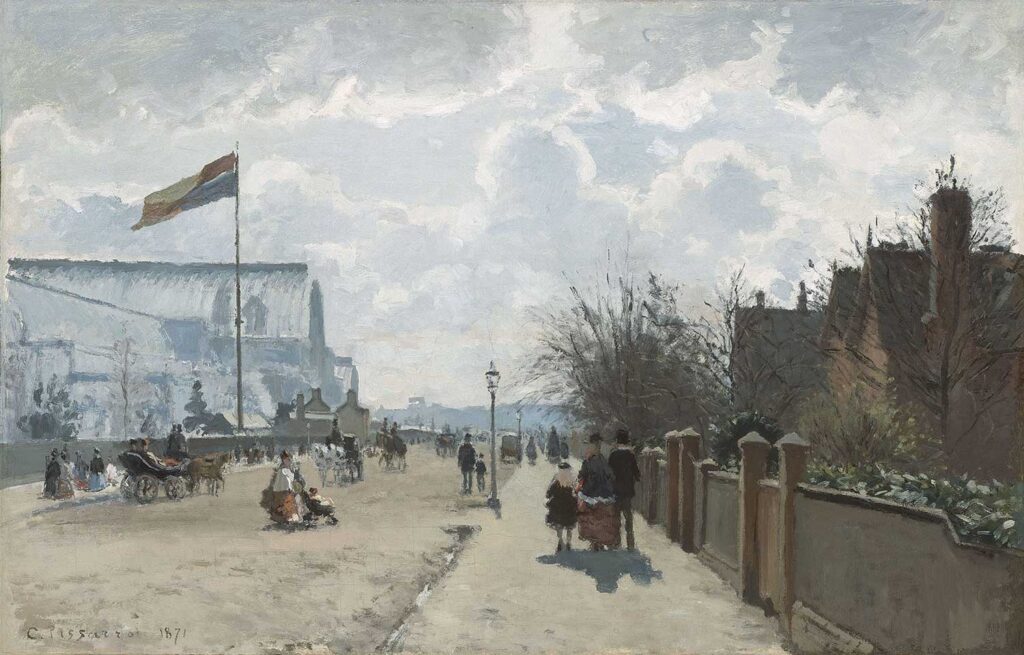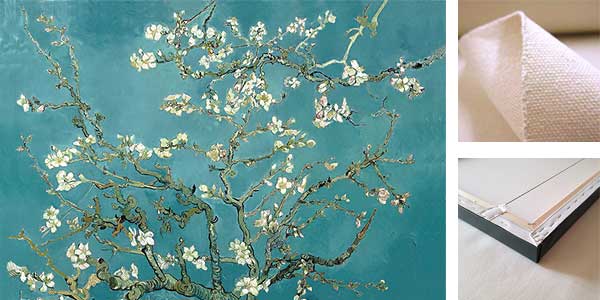
The Crystal Palace by Camille Pissarro was created in 1871. The painting is in Art Institute of Chicago. The size of the work is 47,2 x 73,5 cm and is made of oil on canvas.
Camille Pissarro and his family left France in 1870–71 to escape the Prussian invasion and subsequent civil uprising (known as the Commune). They spent these years in Lower Norwood, outside London. In the neighboring town of Sydenham, Pissarro painted the glass-and-iron Crystal Palace, which was originally designed by Joseph Paxton in 1851 for London’s Hyde Park. Although it was immediately acclaimed for its modern architecture, only two years later the building was dismantled and reassembled in Sydenham. (It was destroyed by fire in 1936.) In this small oil painting, Pissarro relegated what was considered the world’s largest building to the left side of the canvas, as if to give equal space to the “modern-life” scene of families and carriages parading by Sydenham’s more recently constructed middle-class homes… Read more in Art Institute of Chicago
About the Artist
Jacob Abraham Camille Pissarro (10 July 1830 – 13 November 1903) was a Danish-French Impressionist and Neo-Impressionist painter born on the island of St Thomas (now in the US Virgin Islands, but then in the Danish West Indies). His importance resides in his contributions to both Impressionism and Post-Impressionism. Pissarro studied from great forerunners, including Gustave Courbet and Jean-Baptiste-Camille Corot. He later studied and worked alongside Georges Seurat and Paul Signac when he took on the Neo-Impressionist style at the age of 54.
In 1873 he helped establish a collective society of fifteen aspiring artists, becoming the “pivotal” figure in holding the group together and encouraging the other members. Art historian John Rewald called Pissarro the “dean of the Impressionist painters”, not only because he was the oldest of the group, but also “by virtue of his wisdom and his balanced, kind, and warmhearted personality”. Paul Cézanne said “he was a father for me. A man to consult and a little like the good Lord”, and he was also one of Paul Gauguin’s masters. Pierre-Auguste Renoir referred to his work as “revolutionary”, through his artistic portrayals of the “common man”, as Pissarro insisted on painting individuals in natural settings without “artifice or grandeur”. Read more in Wikipedia
Order a reproduction of this work (printed on canvas)
